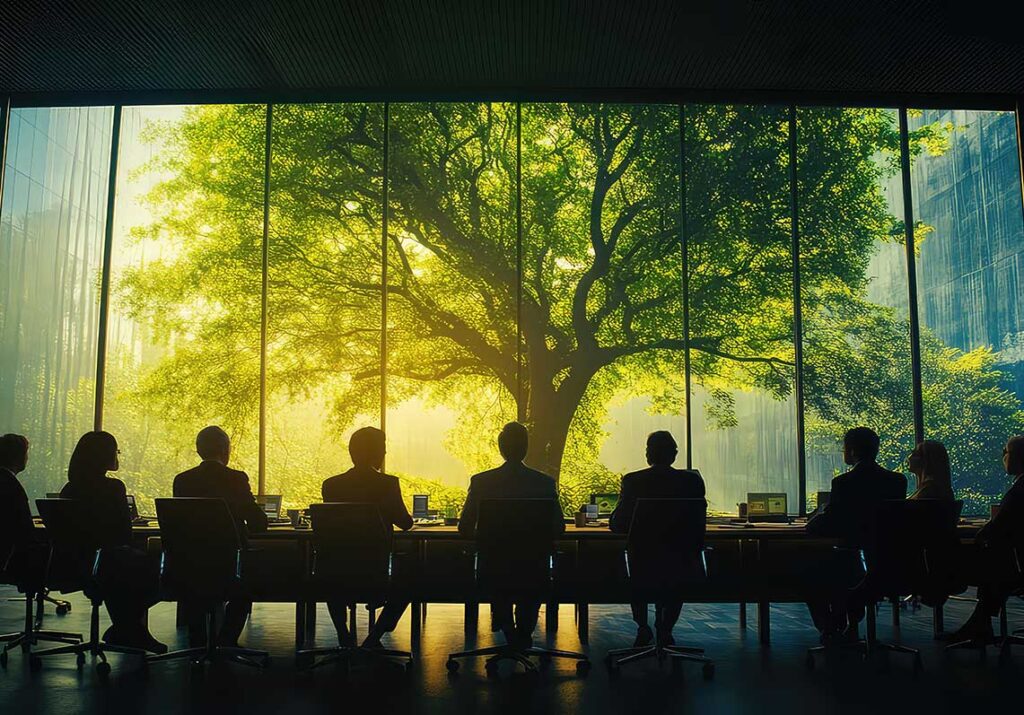As lawmakers loosen their grip on substances like psilocybin and federal programs pump money into clinical trials on ketamine, MDMA, and ibogaine, the public consensus on psychedelics is gradually shifting. Psychedelics are being thrust into the mainstream, and more people are opening up about previous experiences and current habits.
Of those individuals, a disproportionate number seem to come from the tech sector. Psychedelics and Silicon Valley are intrinsically linked, and some have argued that the former helped to build the latter and shape the current digital landscape.
Psychedelics Before Silicon Valley
The story of psychedelics and Silicon Valley began in Menlo Park in 1966. A team of researchers that included Myron Stolaroff, an Ampex engineer, founded the International Foundation for Advanced Study (IFAS) and conducted an experiment titled “Psychedelics in Problem-Solving”.(1)
The goal was to explore the effects of “psychedelic agents”, including LSD and mescaline, on creativity and problem-solving within the professional sector. Twenty-seven male professionals were chosen following an extensive selection process, and various creativity tests were conducted.
The conclusion was that “psychedelic agents [can] facilitate creative problem-solving” when administered as part of a structured regime. More studies followed, and in total, over 350 professional participants were given psychedelics and tested on their creativity and problem-solving abilities. (2)
Research slowed, LSD was criminalized, and eventually, the IFAS ceased operations. But it left an indelible mark on the professional sector and those hundreds of participants, a group that included Douglas Engelbart, the inventor of the computer mouse and the presenter of a landmark computer demonstration known as “The Mother of All Demos”. (3)(4)(5)
The Birth of Silicon Valley
Although Silicon Valley traces its roots back to an early electronics shop founded in 1939, it didn’t earn its name and reputation until the 1970s when companies like Apple, Cisco, and Intel were calling the region home. (6)
The idea that psychedelics like LSD could boost creativity was widespread in the tech community at this time. Steve Jobs, Apple’s co-founder, admitted that he “used LSD approximately ten to fifteen times” between 1972 and 1974. (7)
It was a chaotic and exciting time. These fledging companies were building the technologies that would govern the future, and whether because of its reputation as a “creativity-booster” and “problem-solver”, its perceived ability to help with stress and anxiety, or the fact that it was (probably) readily available due to the proximity of several major laboratories and the sheer wealth that these companies were generating, LSD became the substance of choice for many early tech innovators.
Psychedelics and Modern Entrepreneurs
The 1960s and 1970s were the golden age of psychedelics in the United States, and while they were still used in various professional and recreational settings in the decades that followed, they weren’t as common. In recent years, however, there has been a resurgence, with entrepreneurs turning once more to psychedelics.
Elon Musk has admitted to using a “small amount” of ketamine every week or so, saying that it helps him to get out of a “negative frame of mind”. (8)
Google co-founder Sergey Brin is also reportedly a fan, with rumors that he often sits with magic mushrooms. Furthermore, Brin is part of a growing trend of entrepreneurs who are backing psychedelics by sinking large sums of money into research. In 2021, after selling his shares in Tesla, he invested $366 million into Catalyst4, a nonprofit grantmaking foundation that has funded research into psychedelic medicines. (9)(10)
Catalyst4 has funded various projects aimed at using psychedelics in a clinical setting, including a $15 million investment in Soneira, a company looking into how ibogaine can be used to help those with traumatic brain injuries. (11)
Billionaire investor Peter Thiel has made similar moves, investing in atai Life Sciences, a “drug development platform” that aims to develop new medicines from psychedelics and other substances, with ibogaine high on the agenda once more.(12)
If these programs are instrumental in changing the public perception and legal classification of psychedelic medicines, it means that everything will come full circle. The substances that served as a catalyst to a tech revolution fueled the minds of generations of geniuses who funded the programs that brought said medicines back into the spotlight.
Can Psychedelics Help with Creativity?
With so many tech entrepreneurs sitting with psychedelics as a way to boost their creativity and irrefutably creative geniuses like Steve Jobs swearing by their efficacy, it begs the question—can psychedelics like LSD actually boost creativity?
Well, yes, but as with the psychedelic experience on the whole, it varies from user to user.
Studies have shown that LSD can cause a “shift of cognitive resources ‘away from normal’ and ‘towards the new’”, and brain scans of the effects of LSD suggest that it could help the individual to think in novel, clearer, and less constrained ways than before. (13)(14)
However, these results may be most pronounced with a small to moderate dose and should be taken with an experienced sitter, preferably in combination with psychedelic integration therapy. A therapist can support and direct the individual through their experience and help them to achieve the desired results.
Conclusion: Psychedelics and Silicon Valley
Although we know that LSD and other psychedelics were common in Silicon Valley in the 1970s, it’s hard to estimate just how many tech innovators sat with psychedelics on a regular basis. They were illegal at the time, after all, and while some entrepreneurs are very open about their experiences, others prefer to keep those things to themselves.
These medicines certainly had a major influence on those early generations of tech entrepreneurs, though, and they continue to influence the thinkers of tomorrow.
These days, entrepreneurs focus more on the medicinal and less on the recreational, using smaller amounts (microdosing) in more controlled settings, usually with support from a psychedelic integration coach. It’s more accepted, and while many psychedelic substances are still illegal, there are several that can be administered with medical supervision and support.




